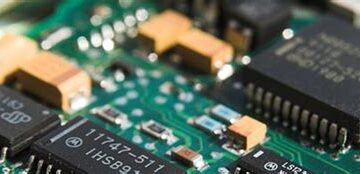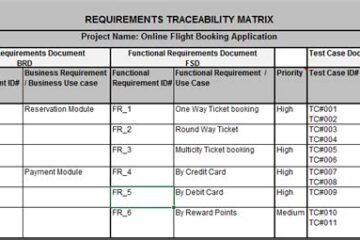Introduction to PCB Layout Design
Printed Circuit Board (PCB) layout design is a crucial step in the development of electronic devices. A well-designed PCB layout ensures that the electronic components function properly, minimizes electromagnetic interference (EMI), and facilitates efficient manufacturing. In this comprehensive article, we will dive into the essential aspects of PCB layout design, covering topics such as component placement, routing techniques, signal integrity, and best practices.
Understanding the Basics of PCB Layout
What is a PCB?
A PCB is a flat board made of insulating materials, such as fiberglass or composite epoxy, with conductive copper traces etched onto its surface. These traces connect various electronic components, such as resistors, capacitors, and integrated circuits (ICs), to form a complete electronic circuit.
Layers in a PCB
PCBs can have multiple layers, depending on the complexity of the circuit design. The most common PCB layer configurations are:
| Layers | Description |
|---|---|
| Single Layer | A PCB with conductive traces on one side only |
| Double Layer | A PCB with conductive traces on both sides |
| Multi-Layer | A PCB with conductive traces on multiple layers, separated by insulating material |
PCB Layout Software
To design a PCB layout, engineers use specialized software tools, such as:
– Altium Designer
– Cadence OrCAD
– Eagle PCB
– KiCad
These software tools provide a user-friendly interface for placing components, routing traces, and generating manufacturing files.
Component Placement
Importance of Component Placement
Proper component placement is essential for several reasons:
1. Minimizing the length of traces between components
2. Reducing electromagnetic interference (EMI)
3. Facilitating efficient assembly and manufacturing
4. Improving thermal management
Guidelines for Component Placement
When placing components on a PCB layout, consider the following guidelines:
1. Group related components together
2. Place sensitive components away from sources of EMI
3. Orient components for easy assembly and soldering
4. Consider the mechanical constraints of the enclosure
5. Leave sufficient space for routing traces

Routing Techniques
Trace Width and Spacing
The width and spacing of traces on a PCB depend on several factors, such as:
– Current carrying capacity
– Impedance requirements
– Manufacturing constraints
Consult the IPC-2221 standard for recommended trace widths and spacing based on the specific requirements of your design.
Routing Strategies
There are several routing strategies to consider when designing a PCB layout:
1. Shortest Path Routing: Minimizes the length of traces between components
2. Grid-Based Routing: Routes traces along a predefined grid
3. Maze Routing: Uses algorithms to find the optimal path between components
4. Interactive Routing: Allows the designer to manually route traces
Via Placement
Vias are used to connect traces on different layers of a PCB. When placing vias, consider the following:
1. Minimize the number of vias to reduce manufacturing costs
2. Place vias away from sensitive components
3. Use appropriate via sizes based on the current carrying capacity and manufacturing constraints
Signal Integrity
Impedance Matching
Impedance matching is critical for high-speed digital signals to minimize reflections and ensure signal integrity. Techniques for impedance matching include:
1. Controlled impedance traces
2. Termination resistors
3. Differential signaling
Crosstalk Reduction
Crosstalk occurs when signals on adjacent traces interfere with each other. To reduce crosstalk:
1. Increase the spacing between traces
2. Use guard traces or ground planes
3. Route sensitive signals on different layers
EMI Mitigation
To minimize EMI in a PCB layout:
1. Use proper grounding techniques
2. Minimize loop areas
3. Use shielding and filtering components
4. Follow industry standards, such as IEC 61967 and IEC 62132
Best Practices for PCB Layout Design
- Start with a schematic review to ensure the circuit design is correct
- Create a component placement plan before routing traces
- Use a consistent naming convention for components and nets
- Follow the manufacturer’s recommendations for component footprints and land patterns
- Use design rule checks (DRC) to verify the layout meets manufacturing constraints
- Collaborate with the manufacturing team to ensure the layout is optimized for production
Advanced Topics in PCB Layout Design
High-Speed Design Considerations
When designing PCBs for high-speed applications, consider the following:
1. Use controlled impedance traces
2. Minimize trace lengths and vias
3. Use appropriate termination techniques
4. Simulate the design to verify signal integrity
Flex PCB Design
Flex PCBs require special considerations, such as:
1. Choosing the appropriate materials
2. Designing for mechanical stress and strain
3. Using teardrops and filleted corners to prevent trace cracking
4. Specifying the correct stiffener and cover layer materials
RF PCB Design
PCB layouts for radio frequency (RF) applications must account for:
1. Impedance matching
2. Minimizing stray capacitance and inductance
3. Using appropriate transmission line structures, such as microstrip or coplanar waveguide
4. Simulating the design to verify RF performance
PCB Layout Design Checklist
Use this checklist to ensure your PCB layout is ready for manufacturing:
1. Schematic review completed
2. Component placement optimized
3. Traces routed according to best practices
4. Vias placed appropriately
5. Signal integrity verified
6. EMI mitigation techniques applied
7. Design rule checks (DRC) passed
8. Manufacturing team consulted
9. Gerber files generated and reviewed
10. Bill of Materials (BOM) created and verified
Conclusion
Designing a PCB layout requires a combination of technical knowledge, attention to detail, and adherence to best practices. By understanding the basics of PCB layout, applying proper component placement and routing techniques, and considering signal integrity and EMI mitigation, you can create PCB layouts that are reliable, manufacturable, and meet the performance requirements of your electronic devices.
Frequently Asked Questions (FAQ)
-
Q: What is the difference between a schematic and a PCB layout?
A: A schematic is a graphical representation of an electronic circuit, showing the components and their interconnections. A PCB layout, on the other hand, is the physical design of the circuit board, including the placement of components and the routing of traces. -
Q: How do I choose the appropriate trace width for my PCB layout?
A: The trace width depends on the current carrying capacity, impedance requirements, and manufacturing constraints of your design. Consult the IPC-2221 standard for recommended trace widths based on your specific requirements. -
Q: What is the purpose of a ground plane in a PCB layout?
A: A ground plane is a large area of copper on a PCB layer that is connected to the ground potential. It serves several purposes, including providing a low-impedance return path for currents, reducing EMI, and improving signal integrity. -
Q: What are the benefits of using a multi-layer PCB?
A: Multi-layer PCBs offer several advantages, such as increased routing density, improved signal integrity, better EMI performance, and enhanced thermal management. They also allow for more complex circuit designs in a smaller form factor. -
Q: How can I minimize crosstalk in my PCB layout?
A: To minimize crosstalk, increase the spacing between traces, use guard traces or ground planes, and route sensitive signals on different layers. Additionally, consider using differential signaling for high-speed signals to reduce crosstalk and improve signal integrity.



0 Comments